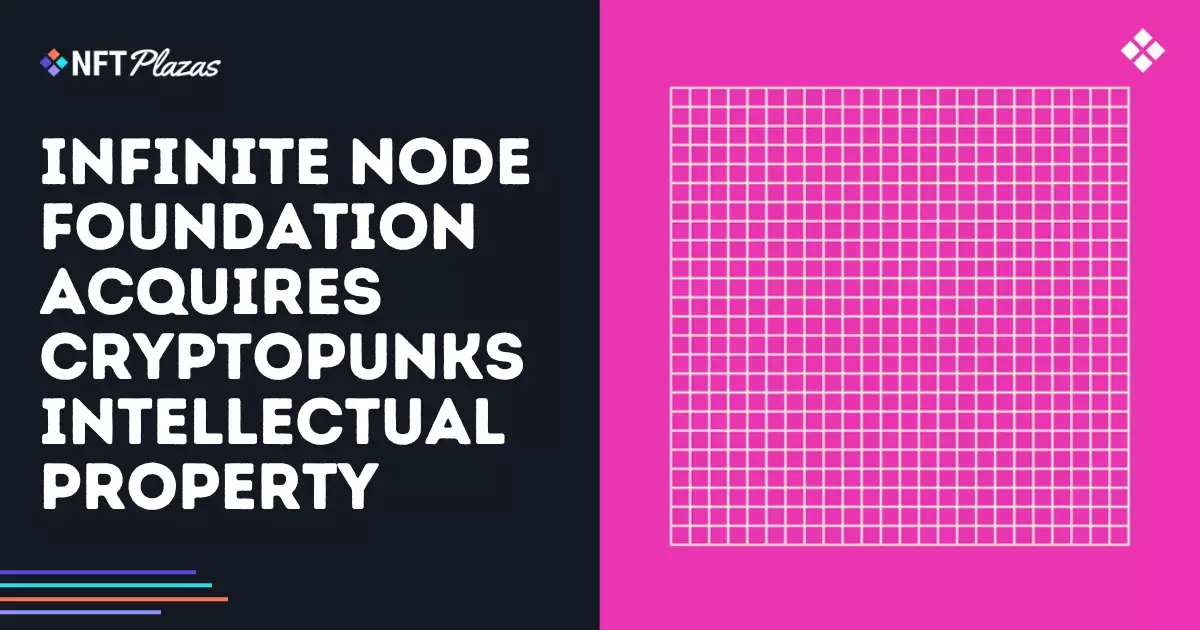In an audacious turn of events, the Infinite Node Foundation (NODE) has acquired the intellectual property rights to the iconic CryptoPunks collection—a defining moment not only for the NFT realm but also a potential case study in the evolving landscape of digital art governance. The establishment of NODE as a nonprofit entity with a hefty $25 million backing certainly raises eyebrows. Is this a fresh path towards preservation, or a romantic folly destined to fail under the weight of its own ideals? The community, historically fueled by entrepreneurial zeal and commercial success, now finds itself navigating uncharted waters where passion meets nonprofit pragmatism.
NODE’s visionary aims of preserving and exhibiting digital artworks rooted in blockchain technology are commendable, yet the transition from commercial to nonprofit governance begs a vital question: will elevating CryptoPunks to a museum-grade status dilute its raw, decentralized ethos? The very fabric of CryptoPunks has always thrived on the organic growth driven by collectors and creators, and placing this collection under the stewardship of a nonprofit could sever that visceral connection. The challenge lies in balancing the nonprofit’s admirable objectives with the intrinsic values that made CryptoPunks a cultural milestone in the first place.
Community vs. Institution
One cannot help but ponder whether the conscientious aims of NODE might alienate the contemporary audience that CryptoPunks initially captivated. The notion of transforming a passionate community-based project into a museum-like exhibit can sound almost sacrilegious. For years, CryptoPunks thrived on the very principle of decentralization and communal ownership; suddenly, with a nonprofit protecting it, does it risk becoming a sterile artifact, locked away for “proper” appreciation rather than dynamic interaction?
The advisory board populated with notable figures such as Matt Hall and John Watkinson from Larva Labs and Wylie Aronow from Yuga Labs calls to question the authenticity of this governance. While their involvement might instill some confidence, it also casts a long shadow of irony. After all, these are the very individuals who have benefited from the commodification of CryptoPunks. Will their new roles as caretakers allow for authentic representation, or will it ultimately prioritize institutional credibility over community vibrancy?
The $25 Million Question
Investing $25 million into this initiative seems laudable, but the looming question remains—can this NPR (Nonprofit Project Renaissance) model be sustainable? Traditional nonprofit funding often hinges on donor goodwill; how will NODE maintain its momentum in the fickle world of digital art? If past data serves as a barometer, many nonprofits struggle to sustain interest over the long haul, especially in disciplines where commercial value once reigned supreme.
Moreover, NODE’s intention to provide technological preservation and community engagement invites skepticism. Quite frankly, will such lofty ambitions translate into tangible results? Technology, especially in the blockchain realm, evolves rapidly; thus, constant boardroom deliberations revolving around preservation may falter against the relentless pace of innovation. Without a flexible and agile response mechanism, NODE could easily find itself on the wrong side of relevance, devoid of the agility that allowed the CryptoPunks movement to flourish in the first place.
Recontextualizing the CryptoPunks Legacy
With plans to showcase CryptoPunks within the larger narrative of digital and contemporary art, NODE has the potential for transformative impact. However, this ambition teeters precariously between education and elitism. It’s crucial to tread carefully along this path; the challenge lies in ensuring that this pivot does not dismiss the spirited, DIY culture that Democracy 2.0 embodied.
While the founders highlight the importance of preserving not just the collection but its underlying ethos, the operational reality could create friction within the original community. Existing collectors have built personal empires around their Punks, and a sacrificial shift towards the nonprofit model may alienate those whose financial investment aligned with personal pride and historical significance.
Ultimately, this ambitious transition raises more questions than answers. In the rapidly evolving landscape of the NFT market, a nonprofit governance model may offer essential frameworks for preservation, yet it faces significant hurdles against a backdrop of ever-changing consumer behaviors and technological advancements. The trajectory of the CryptoPunks journey now becomes a litmus test not just for artists and collectors, but for the entire NFT ecosystem and its ability to balance commercial success with lasting cultural significance.














